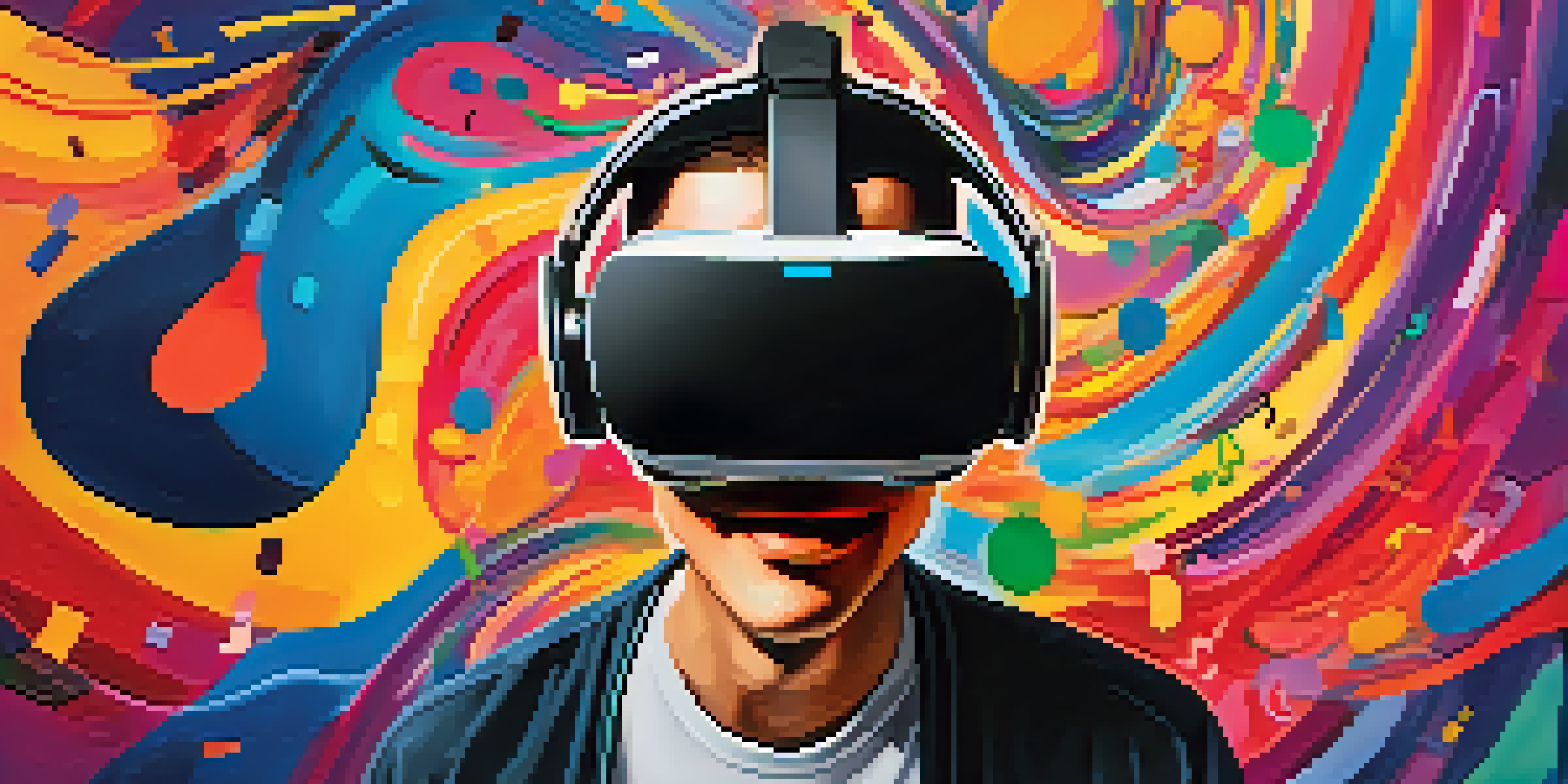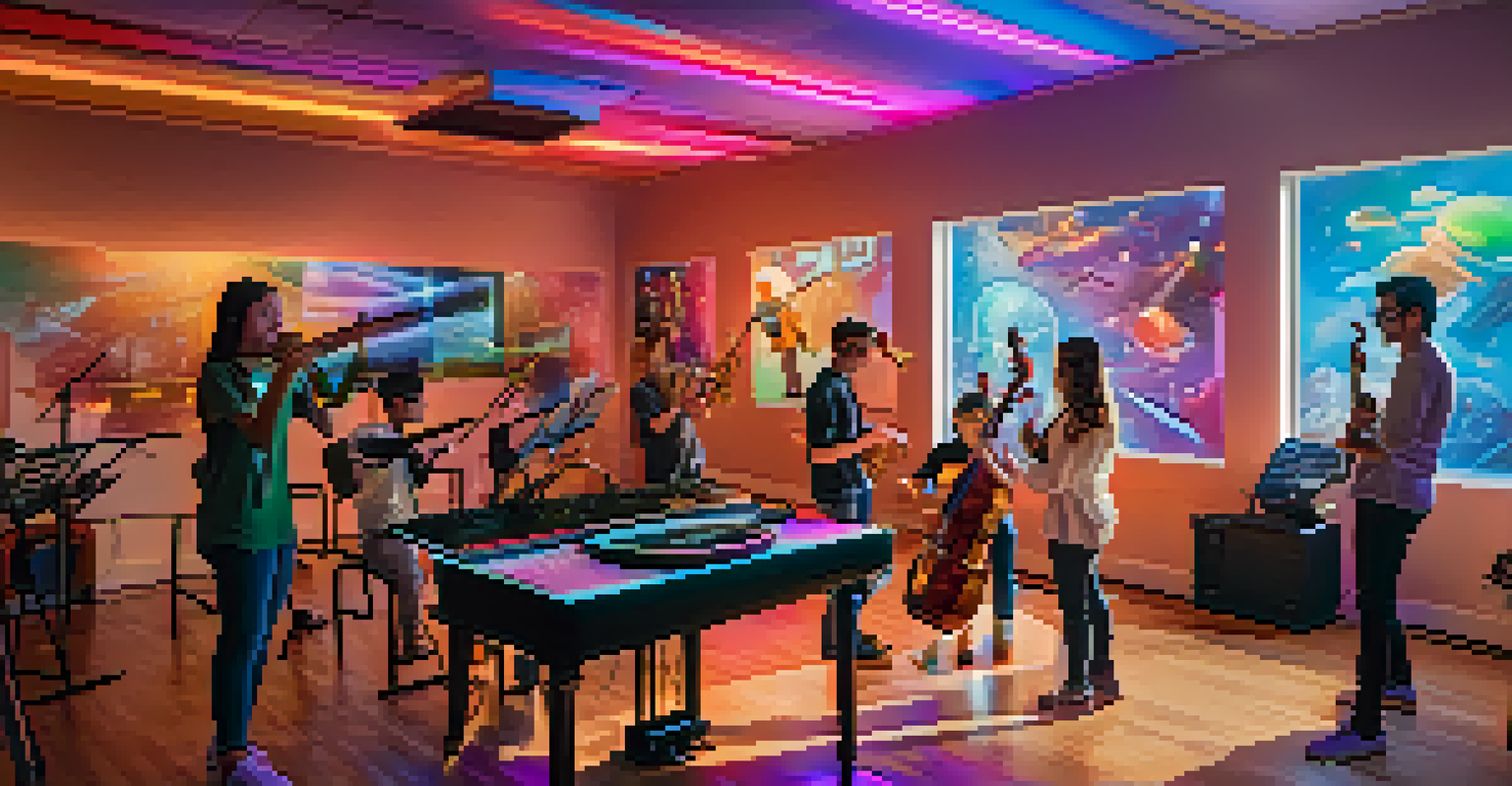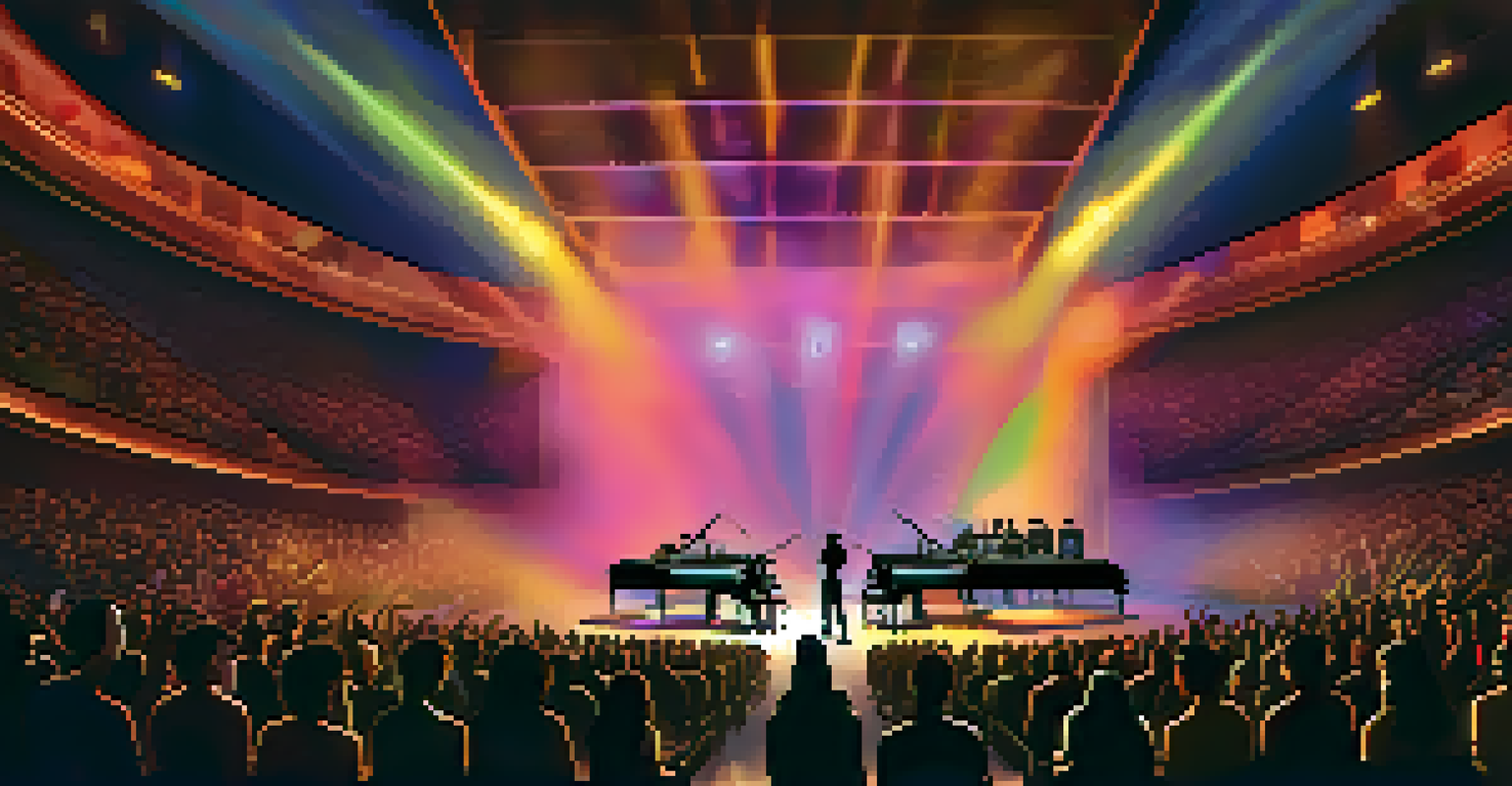Virtual Reality: A New Frontier for Music Education

What is Virtual Reality in Music Education?
Virtual reality (VR) in music education refers to immersive environments where students can learn and interact with music in novel ways. Imagine donning a VR headset and instantly being transported to a virtual concert hall or a music studio. This technology allows students not only to observe musicians but also to engage with the music-making process in a captivating manner. By simulating real-world experiences, VR takes music education beyond traditional classrooms.
Education is not the filling of a pail, but the lighting of a fire.
In these immersive spaces, learners can visualize complex musical concepts, such as rhythm and harmony, making abstract ideas more tangible. For example, a student can see how sound waves move and interact in real-time, enhancing their understanding of acoustics. This form of experiential learning can significantly boost a student's retention and application of musical knowledge.
Moreover, VR offers an inclusive platform for students of all backgrounds and abilities. Whether someone is a beginner or an advanced musician, VR can tailor experiences to meet individual needs, making music education more accessible and engaging for everyone.
Benefits of VR in Music Learning
One of the most significant advantages of VR in music education is the ability to practice in a safe, controlled environment. Students can experiment with different instruments and techniques without the fear of judgment or mistakes. This freedom encourages creativity and exploration, which are vital components of musical growth.

Additionally, VR can simulate scenarios that may be challenging to replicate in real life, such as performing in front of a large audience. By practicing in a virtual concert setting, students can build confidence and reduce performance anxiety. This kind of exposure can prove invaluable when transitioning to live performances.
VR Enhances Music Education Engagement
Virtual reality creates immersive environments that allow students to learn and interact with music in innovative ways.
Furthermore, VR technology can foster collaboration among students from different geographical locations. Virtual classrooms can connect aspiring musicians worldwide, allowing them to share ideas, perform together, and learn from each other's unique cultural perspectives. This global approach enriches the learning experience, making it more diverse and comprehensive.
Engaging Different Learning Styles with VR
Every student has a unique learning style, and VR can cater to various preferences seamlessly. Visual learners benefit from the vivid graphics and interactive elements in a VR environment, while auditory learners can immerse themselves in music and soundscapes. Kinesthetic learners, on the other hand, can engage with virtual instruments, allowing them to physically interact with music in a way that traditional methods cannot provide.
The beautiful thing about learning is that no one can take it away from you.
For instance, a student who struggles with reading sheet music could use VR to visualize notes and rhythms as they play an instrument. This hands-on approach can demystify complex concepts and provide instant feedback, which is crucial for skill development.
Moreover, VR can foster a sense of community among learners. When students collaborate in a virtual space, they can share their experiences and insights, making the learning process more dynamic. This social interaction not only enhances motivation but also reinforces the idea that music is a communal art form.
Challenges of Implementing VR in Music Education
While the potential of VR in music education is exciting, there are challenges to consider. First, the cost of VR equipment can be a significant barrier for many schools and institutions. High-quality headsets and software require substantial investment, which may not be feasible for everyone.
Additionally, there is a learning curve associated with using VR technology, both for students and educators. Teachers need proper training to incorporate VR into their curricula effectively, and students must become familiar with navigating virtual environments. This transition can be daunting but is necessary for maximizing the benefits of VR.
Personalized Learning Through VR
The integration of AI in VR platforms can tailor music lessons to individual students' needs, providing targeted feedback.
Lastly, ensuring equal access to technology is crucial. Not all students may have the same access to VR equipment at home, which could widen the digital divide in music education. Addressing these challenges is essential for creating an equitable learning landscape that can benefit all students.
Future Trends in VR and Music Education
Looking ahead, the future of VR in music education appears promising. As technology continues to evolve, we can expect more sophisticated and user-friendly VR experiences tailored specifically for music learners. These advancements could lead to even more immersive simulations and realistic soundscapes that enhance the educational experience.
Moreover, the integration of artificial intelligence (AI) into VR platforms could personalize learning experiences further. AI can analyze a student's progress and adapt lessons to their individual needs, providing targeted feedback and resources. This level of customization could revolutionize how music is taught and learned.
Additionally, collaborations between tech companies and music educators will play a vital role in shaping the future landscape of VR in music education. By working together, they can create innovative tools and resources that bridge the gap between technology and pedagogy, ensuring that students receive the best possible music education.
VR as a Supplement, Not a Replacement
It's essential to remember that while VR offers exciting possibilities, it should complement traditional music education rather than replace it. The human aspect of learning music—such as mentorship, collaboration, and live performance—remains irreplaceable. VR can enhance these experiences by providing additional tools and resources, but the core values of music education should always be preserved.
For instance, students can use VR to practice their skills and concepts at home but should still participate in group classes and live performances. This balanced approach ensures that they develop both technical abilities and interpersonal skills, which are crucial in the music industry.
Balancing VR and Traditional Methods
While VR offers exciting possibilities, it should complement traditional music education, preserving mentorship and live performances.
Ultimately, the goal of music education is to inspire passion and creativity in students. By integrating VR thoughtfully, educators can create a rich, multifaceted learning experience that nurtures both the artist and the individual.
Conclusion: Embracing the New Frontier
In conclusion, virtual reality presents a new frontier for music education, offering innovative ways to engage students and enhance their learning experiences. With its ability to create immersive environments and cater to diverse learning styles, VR has the potential to revolutionize how we teach and learn music.
As educators, musicians, and technologists continue to collaborate, we can look forward to a future where music education is more accessible, engaging, and effective than ever before. Embracing this technology allows us to foster a new generation of musicians who are not just skilled but also passionate about their craft.

So, let's embrace this new frontier and explore the endless possibilities that virtual reality brings to music education. After all, the future of learning is not just about technology—it's about inspiring creativity and connection in every student.